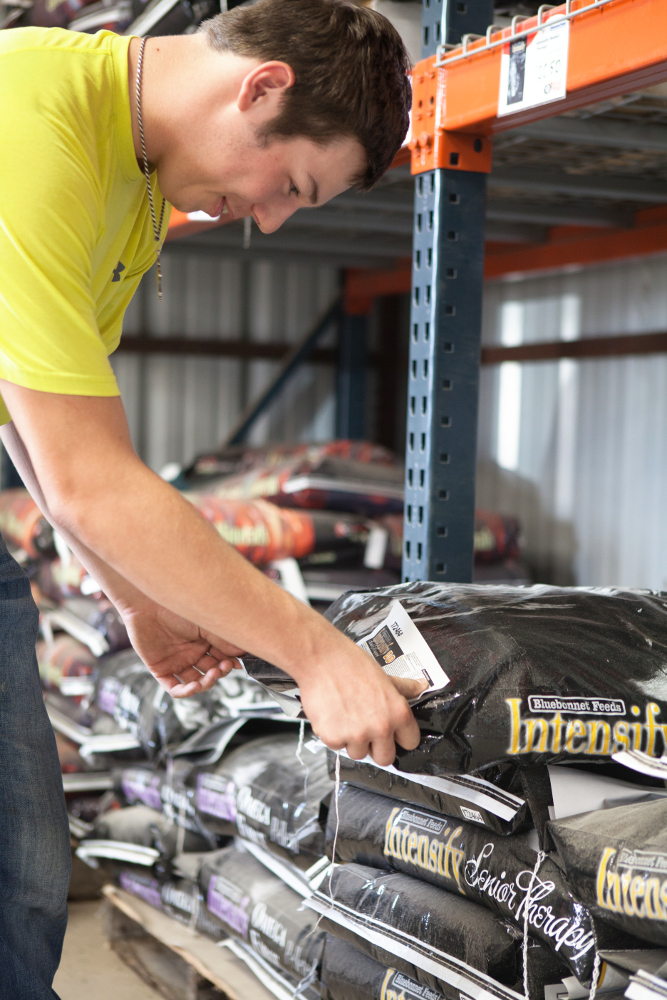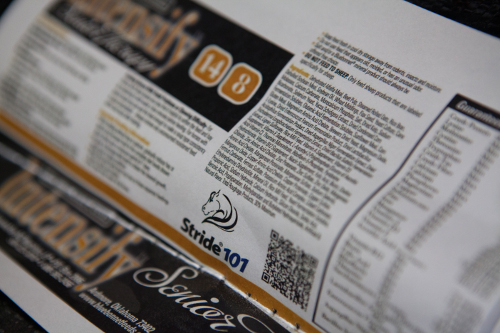Identifying Quality Feed by Jyme L. Nichols
0We’ve all been there; standing in the feed aisle trying to decide which product to choose, wanting to make an informed decision, the best decision. We think about the needs of our horse and we research the internet. We even compare feed tags, but when you don’t really know what to look for, they all look the same, and it’s hard to tell if there really is any difference between one bag and another. In the first part of this nutrition series, we will evaluate the major components of a feed and show you what to look for on a feed tag so that you can be informed as a buyer and horse owner.
The first thing people typically look for on a feed tag is the crude protein percentage. This may be the single most misunderstood piece of nutrition information in the equine industry. Crude protein really doesn’t tell us much at all about the feed. Crude protein is just the number we arrive at when we multiply the amount of nitrogen in the feed by 6.25. What we really want to know is the percentage of lysine in the feed. Lysine is the ‘first limiting amino acid’-it is the single most important building block of protein. Without lysine and other essential amino acids, the crude protein is practically useless.
To make matters even more confusing, tags are listed with percentage values, but horses don’t have a requirement for a certain percent of protein or lysine at all. Instead, they have a requirement for a specific weight in grams of protein and lysine. So, the percentage is not relevant until you multiply it by the total weight of feed that you are feeding. For example, an 1,100 lb. horse in light exercise requires about 700 grams of crude protein and 30 grams of lysine. Remember that feed is just a “balancer” for the horse’s total ration, most of the protein and lysine will be provided in the horse’s diet through forage, therefore feed should be used to make up for the protein and lysine that is lacking in the forage.
Fat is becoming ever so popular in equine feeds because it is a much safer way to increase the calorie content of a feed (compared to adding starchy ingredients such as corn and oats). Fat provides 2.25 times more calories than starch and is considered a “cool energy” source, meaning it won’t cause the horse to be excitable or hotheaded. Fat is also great for helping put weight on a horse and to give a horse that extra shine.
Crude fiber is a measurement of cellulose, hemicellulose and lignin (structural components of plants). Crude fiber in a feed typically comes from products such as alfalfa, beet pulp and hulls (the portion remaining once starch and oil is removed). Horses require fiber in their diet, and most horses meet that requirement though forage. Feeds that are higher in fiber are usually safer to feed to horses compared to feeds that are low in fiber (and high in starch), because there is less risk of starch overload to the hind-gut which could cause colic, gas and laminitis. High fiber generally means fewer calories, so if a feed has a high fiber content and your horse needs extra calories, you will want to look for a high fat content in order to provide the needed calories.
The next major area to evaluate on a feed tag is the ingredient listing. Some manufacturers list ingredients by name which is referred to as an “open label.” Other manufacturers list ingredients in collective terms which allows them to use different ingredients within a defined range to formulate the feed. When a company uses an open label, they are showing exactly which ingredients they used in the feed. An example of the first few ingredients on an open label may read like this: Alfalfa Meal, Soybean Meal, Wheat Middlings, Rice Bran, Beet Pulp.
A company using collective terms will have first ingredients such as Roughage Products, Processed Grain By-Products, Plant Protein Products. Companies use collective terms in order to allow themselves room to use different ingredients which helps keep the cost of the feed down for the buyer. However, the downside of that method means the feed can vary radically from bag to bag and mill to mill, because each mill is using ingredients that are in close proximity and low cost. Ingredients available in one region of the country are not available in other regions, so if you are traveling from state to state it is really difficult to get the same feed every time if the brand is not using an open label.
Open Label doesn’t mean “Locked Formula.” Locked Formulas mean that a company sets the ingredients for a particular feed and chooses not to switch out ingredients from that formula. “Open Label, Locked Formula” model creates the most consistent product from bag to bag, but it typically comes with a slightly higher price, because it takes intense management to ensure that raw ingredients are appropriate quality, and finished feeds meet all nutrient guarantees and visual expectations.
Equine nutrition is complex and everchanging. It is a science. Nutritionists, researchers, and feed manufacturers continue to challenge past practices in an effort to improve what we already know. Education is power, we can never know too much, and it is the responsibility of each horse owner to provide the best nutrition we can in our given circumstance. Stay tuned for the next nutrition column, where we will discuss what to look for when evaluating the vitamin and mineral guarantees on a feed tag.
–
JYME NICHOLS
Director of
Technical Services
Bluebonnet® Feeds
Ardmore, OK
Jyme Nichols obtained a masters degree in Animal
Science from Montana State University
with a focus on Equine Nutrition. Her
research was published in the Journal
of Equine Veterinary Science and won
awards from the Equine Science Society
and the American Society of Animal
Science. She resides with her husband in Lone Grove, OK.





